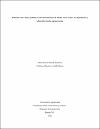Mostrar el registro resumido del documento
Relación entre forma y límite. como instrumentos de diseño en un centro de capacitación y educación técnica agropecuaria.
| dc.contributor.advisor | Jaramillo-Acosta, Laura |
| dc.creator | Castillo-Olmos, Christian Castillo |
| dc.creator | Pulido-Gutierrez, Paula Ximena |
| dc.date.accessioned | 2023-08-02T17:42:29Z |
| dc.date.available | 2023-08-02T17:42:29Z |
| dc.date.created | 2022-05-27 |
| dc.identifier.uri | http://repositorio.uniagustiniana.edu.co/handle/123456789/2118 |
| dc.description | La presente investigación analiza la relación entre forma y limite en la infraestructura educativa, comercial y deportiva en la localidad de Usme, Bogotá, dado que se evidencio que no cuentan con infraestructuras óptimas para el desarrollo de estas actividades, por otra parte, se evidenciaron dos tipos de límites: naturales y de contaminación el cual afecta de manera directa a los usuarios de la localidad impidiendo el habitar de los espacios. Es importante este tema de investigación para reconocer barreras urbanas que se presentan en la localidad y como estas afectan el desarrollo y la relación entre las infraestructuras, el urbanismo y la población. Es así como la investigación propone escenarios para la ciudad con diversidad de usos y materializaciones permitiendo la fluidez espacial y permeabilidad entre el adentro y el afuera en relación con la infraestructura. Esta investigación se desarrolló por una metodología mixta (cualitativa y cuantitativa) comprendida en tres etapas: identificar, determinar y esquematizar, mediante las cuales se analizaron los diferentes equipamientos y las características de cada variable con respecto a la localidad, para proponer estrategias de diseño en relación con el exterior e interior de los espacios urbanos, otorgándole a los escenarios nuevas relaciones espaciales que permitan romper con el límite y den identidad al proyecto. Mediante la herramienta notación se identifica las características y/o elementos que permiten generar relaciones entre forma y limite en infraestructuras educativas-deportivas, y así determinar tipos de configuraciones forma-espacial para proponer estrategias que se implemente en el diseño de los diferentes equipamientos. De esta manera el proceso investigativo es el primer acercamiento a la intención arquitectónica donde se expone la relación entre forma y limite y el concepto de pixelado dicotómico, como instrumentos fundamentales para el desarrollo de un equipamiento de educación técnica enfocado en el desarrollo de actividades deportivas y artísticas como aporte innovador al proyecto. |
| dc.description.abstract | The present investigation analyzes the relationship between form and limit in the educational, commercial and sports infrastructure in the town of Usme, Bogotá, since it was evidenced that they do not have optimal infrastructures for the development of these activities, on the other hand, two types of limits: natural and pollution which directly affects the users of the locality, preventing them from inhabiting the spaces. This research topic is important to recognize urban barriers that occur in the locality and how they affect development and the relationship between infrastructure, urban planning and population. This is how the research proposes scenarios for the city with diversity of uses and materializations allowing spatial fluidity and permeability between inside and outside in relation to infrastructure. This research was developed by a mixed methodology (qualitative and quantitative) comprised of three stages: identify, determine and outline, through which the different facilities and the characteristics of each variable with respect to the locality were analyzed, to propose design strategies in relationship with the exterior and interior of urban spaces, giving the scenarios new spatial relationships that allow breaking with the limit and give identity to the project. Through the notation tool, the characteristics and/or elements that allow generating relationships between form and limit in educational-sports infrastructures are identified, and thus determine types of form-spatial configurations to propose strategies that are implemented in the design of the different facilities. In this way, the investigative process is the first approach to the architectural intention where the relationship between form and limit and the concept of dichotomous pixelation are exposed, as fundamental instruments for the development of a technical education facility focused on the development of sports activities and arts as an innovative contribution to the project. |
| dc.format.mimetype | application/pdf |
| dc.language.iso | spa |
| dc.source | instname:Universitaria Agustiniana |
| dc.source | reponame:Repositorio Institucional UniARI |
| dc.subject | Forma, Permeabilidad, Fluidez espacial, Pixelado, dicotomía |
| dc.title | Relación entre forma y límite. como instrumentos de diseño en un centro de capacitación y educación técnica agropecuaria. |
| dc.type | info:eu-repo/semantics/bachelorThesis |
| dc.rights.accesRights | info:eu-repo/semantics/openAccess |
| dc.rights.acceso | Abierto (Texto Completo) |
| dc.subject.keyword | Limit, Shape, Permeability, Spatial fluidity, Pixelation, dichotomy. |
| dc.type.hasVersion | info:eu-repo/semantics/acceptedVersion |

